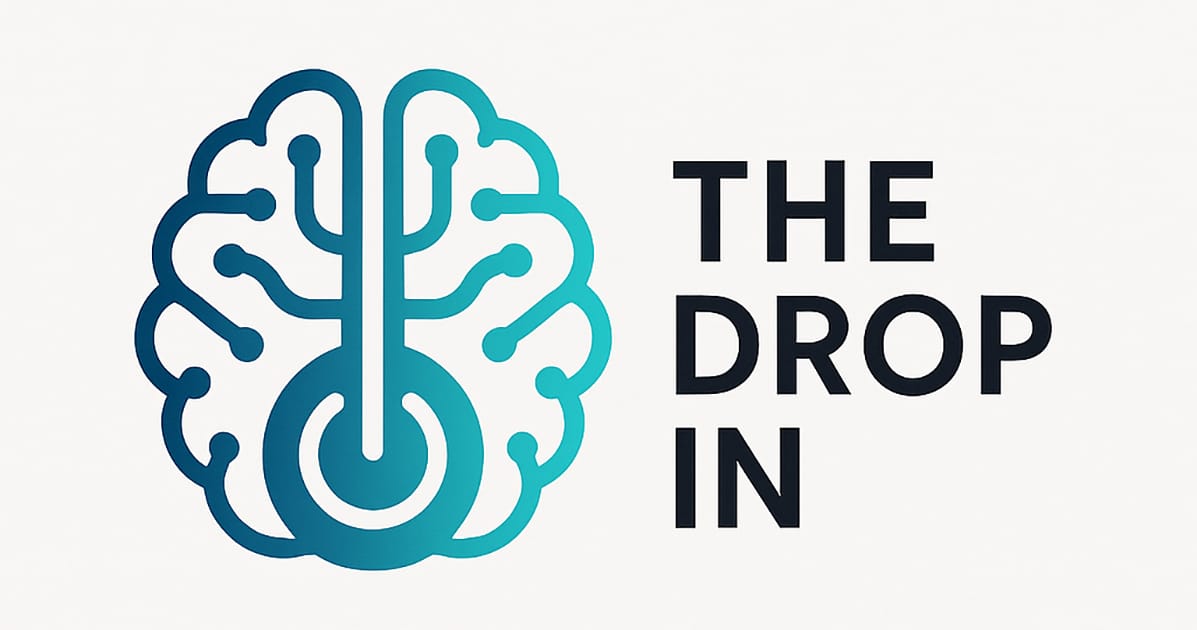- The Drop In
- Posts
- The Drop In: AI & Flow State
The Drop In: AI & Flow State
Edition 007

Edition 007 – Use it or Loose it
Welcome back to The Drop In — your weekly Flow-State OS for peak performance.
Outsourcing to AI? Don't let your flow muscle atrophy.
Last week, I was midway through drafting a tricky piece of writing when I hit a wall. The words weren’t flowing. The ideas felt flat. So I asked AI for help.
And just like that, the work became easier. Too easy.
Within seconds after sending my prompt, I had a passable version of the piece. But I also noticed something else: I didn’t feel the same creative satisfaction. No time dilation. No deep immersion. No flow.
It got me thinking—what happens to our ability to enter flow when we offload too much to machines? Are we getting soft? Are we unintentionally starving the very system that makes us come alive?
Achtung!
AI tools are a marvel of modern progress. But they’re also a shortcut. And the human brain is a “use it or lose it” organ.
Recent studies have shown a measurable decrease in brain activity when users rely heavily on AI for tasks requiring cognition. One study using fMRI scans from the University of Tokyo (2023) found reduced activity in the prefrontal cortex and anterior cingulate cortex—areas responsible for decision-making, focus, and error monitoring—when participants used AI-generated answers compared to solving problems independently.
Another study from ETH Zurich (2024) found that prolonged reliance on generative AI tools led to decreased working memory load and creative problem-solving engagement over time. In short: when the AI does the thinking, your brain doesn’t get the reps.
And while that’s convenient… it’s also quietly dangerous. Especially for flow.
Perhaps you know of people who have retired and their mental acuity and cognition rapidly declined. This is a similar phenomenon.
No friction, no flow
Here’s the tricky paradox: the same AI tools that can save you time can also rob you of challenge, the very ingredient that flow depends on.
Of course we’re not going to abandon our trusty AI assistants, nor am I suggesting that you don’t use AI to help you be more productive.
Experiment:
Draft First, Then Prompt: Use AI only after you’ve attempted the problem or written a first draft. This keeps the cognitive work intact.
Reverse Prompting: Before asking for help, write the prompt you think the AI would need to solve your problem. This meta-layer forces clarity of thought.
Flow-Check AI Tasks: Ask yourself: “Is this task just about output?” or “Does this challenge push my skills just enough?” If it’s the latter, keep it human.
Praxis: The “Flow First” Protocol
This week, pick a task you typically outsource like writing, brainstorming, or designing and try the “Flow First” approach:
Do the task on your own for 30–60 minutes without AI support.
Then, ask AI to tackle the same problem, and compare.
Reflect:
Which felt more satisfying?
Which version felt more you?
You’ll likely find that your brain—though slower—delivers deeper satisfaction.
A question I have been asking myself: Can deep work and AI co-exist? Can Flow and AI exist in the same headspace? Yes to the former, and I am finding the latter hard to prove as true.
Final Thought:
AI can enhance your work. But flow enhances your life.
And that requires friction, challenge, and effort.
So use the tools, but don’t skip the sweat.
Because the mind is a muscle and flow is the workout.
– Michael
Founder, The Drop In
& Author of ‘Human Traits — a novel exploring humanity’s relationship with AI’